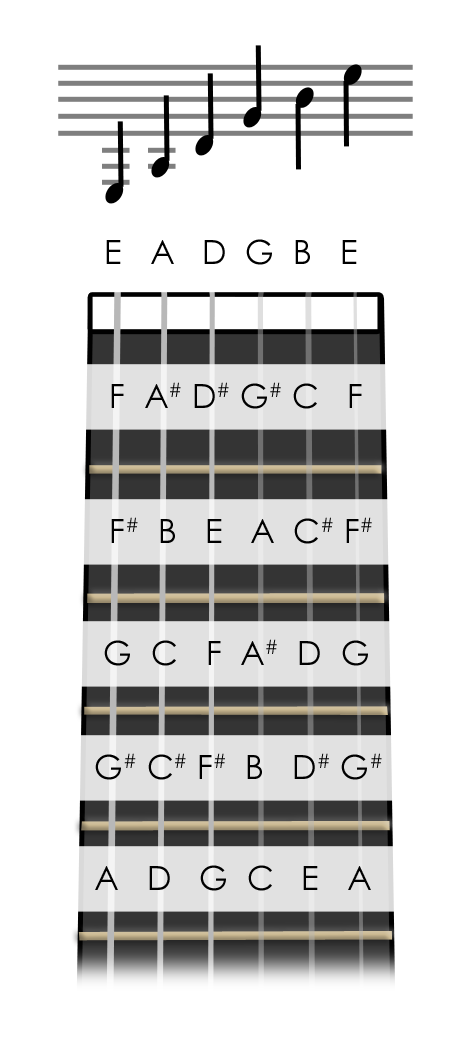Navigation:
In this introductory lesson, we will learn about the anatomy of a guitar and how it works.
| 1.1 Types of Guitars |
Guitars come in all shapes and sizes.
The most common guitars are the:
- classical guitars (with metal + nylon strings)
- acoustic guitars (with metal strings)
- electric guitars (with solid bodies)
To learn to play the guitar, I would recommend using a classical guitar for:
- the strings are further apart so it is easier to position your fingers correctly for chords and
- the strings are less painful on your fingers
| 1.2 Parts of a Guitar |
Just like you don’t need to know all the parts of a car to be able to drive it, you do not need to know every single part of a guitar.
Knowing the parts shown in the diagram would suffice.
| 1.3 Holding the Guitar |
| 1.4 Guitar Theory |
Notes are sounded when the strings vibrate.
The open strings on the guitar (without pressing on any frets) correspond to the following notes:
|
1st string : E
2nd string : B
3rd string : G
4th string : D
5th string : A
6th string : E |
Pressing each higher fret corresponds to a half-step/ semitone in music theory i.e. C → C#; E → F (see diagram)

| 1.5 Tuning the Guitar |
In this section, the Guitar Tuna app (iOS and Android, free) will be used for illustration.
How to use:
- Open the app and position your phone microphone near the guitar.
- Pluck the 1st string (high E) and check the app.

- If the string is in-tune, you should see a tick in the bubble at the top of the screen.
- Otherwise, the words “too low!!” or “too high!!” will be shown.
- Tighten (for too low) or loosen (for too high) the tuning key for the string until you get the tick.
Repeat Steps 2-5 for the rest of the strings for their respective notes.
Relative Tuning: 5th Fret Method
Using the 5th fret method, we can tune the strings relative to one another.
The basis of this method is that the note of an open string is the same as that of the 5th fret of the string before it.
For the method to work, you must first ensure that one of the strings is tuned correctly either using the tuner app, tuning fork or piano etc and then use that string as the reference.
For example, I would make the 6th string (low E) the reference.
- Play the 5th fret of the 6th (E) string and then play the open 5th (A) string. Their pitches should sound the same. Otherwise, tighten or loosen the 5th string to change the pitch until they sound the same.
- Repeat for the rest of the strings.
Exception:
When tuning the 2nd string, use the 4th fret of the 3rd (G) string instead.



















No comments :
Post a Comment